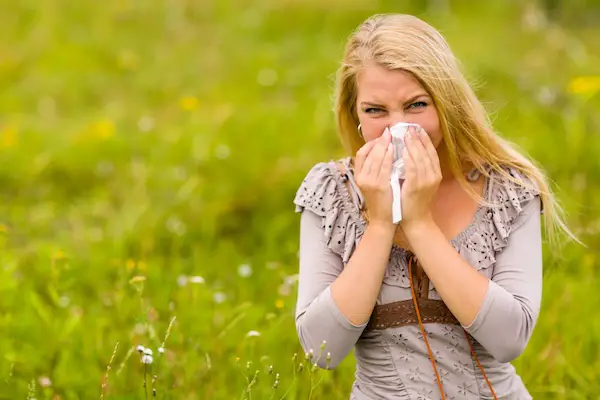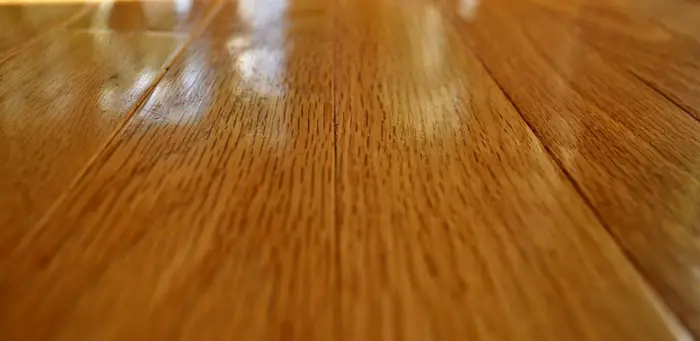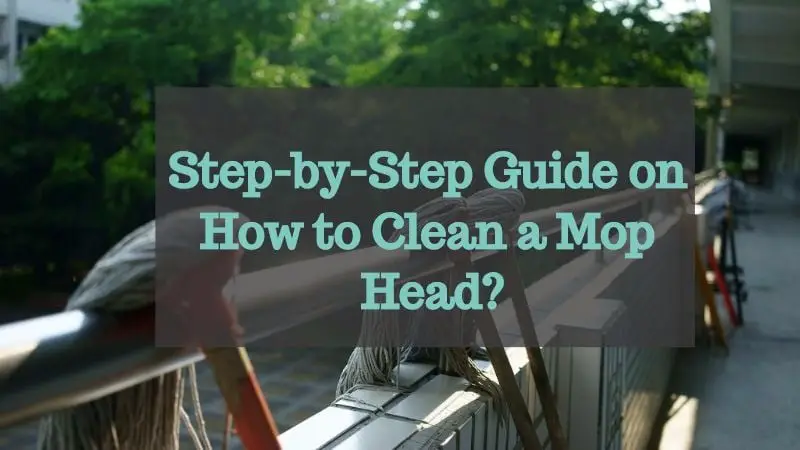Do you have a stuffy nose, scratchy throat, and watery eyes? If you are suffering from one or all these symptoms then you are not alone. About 20% of Americans suffer from some of the other allergies and the triggers are often within the house. The environment allergies in the form of dust, pollen, and dander are enough to further aggravate the allergies, making it difficult to open a window. However, that does not mean that you simply allow the allergens to accumulate in your house. It’s time to show who’s the boss so take the lead with these cleaning tips for allergy sufferers.
Before you go ahead with the cleaning tips, make sure you first find out what you are allergic to, so that you can focus on what is important. The most common triggers are mold, pollen, dust mites, and pet dander. However, it could be that you are allergic to cats. So, there’s no point in changing other things in the house or keeping the windows closed. Visit an allergist and get a test done if required to discover the reason behind your allergies. Here are the common solutions.
1. Prepare A Cleaning Schedule
If you are prone to allergies, you need to be on the top of the game always and stay updated about pollen forecasts. Make sure you clean your house thoroughly so that it does not become a trigger zone for pollens. Create a cleaning schedule and stick by it so that it does not get postponed to ‘tomorrows’ that never come. A little bit of maintenance throughout the week can ensure that you have a happy and healthy allergy-free home.
2. Vacuum Clean The House Regularly
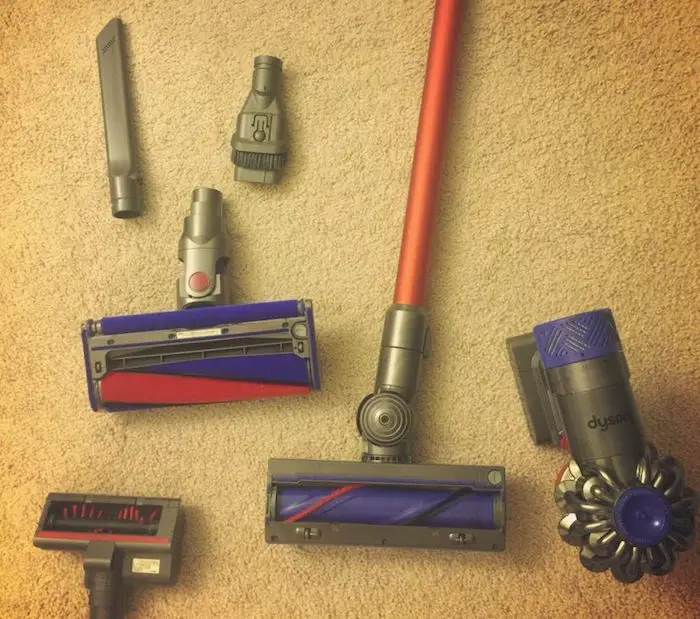
Make it a habit to vacuum clean the house at least twice a week to get rid of dust, dirt, and mites. Vacuuming is much better than using a broom because the later only spread the dust around instead of completely removing it. Get a light and handheld vacuum cleaner that you can easily carry from one room to another. Keep all the attachments in one place so that you can properly vacuum the household floors, upholstery, and furniture. Health experts recommend allergy sufferers to buy a vacuum cleaner with a HEPA filter (see my reviews) to trap the tiniest of dust particles.
3. Get A Vacuum Cleaner With Water-Filter System
Those who suffer from severe dust allergies may consider upgrading their vacuum cleaners to models that contain a water filter system. These appliances are capable of binding the vacuumed dust and debris in the water, thus making them perfect for allergy sufferers. The water filter also helps in deep cleaning the floor and makes the house dust-free. The dirt particles that are not retained in the water get filtered by the HEPA filter, resulting in the effective elimination of house dust mites and germs.
4. Ventilate The House Adequately
Air-borne dust trapped in the enclosed areas is one of the main causes of concern for allergy sufferers. To prevent this, make sure there are adequate ventilation and good air circulation within the house. During hot days, open the windows to allow ventilation when the temperature is not so high. You may use mesh screens or air filters on windows and doors to only let fresh air come in and keep pollens and other allergens at bay.
5. Dust With A Microfiber Cloth
Another important cleaning tip for allergy sufferers is to dust things around the house with a microfiber cloth. The reason why I emphasize on using a microfiber cloth is that dusters are just like brooms so they will spread allergens around, triggering an asthma attack or other respiratory issues. The microfiber material is known to capture the smallest particles and do a good job at removing dust.
6. Wear A Mask When Cleaning The House
When vacuum cleaning or dusting the house, make sure you wear a proper mask to avoid inhaling the dust and germ-laden air. After you are done with the cleaning, leave the house for a few hours to restrict your exposure to the allergens you kicked into the air.
7. Don’t Make Your Bed, Do This Instead
If you have the habit to make your bed soon after you wake up, you may be aggravating your allergy symptoms. Made bed look great but they can give for dust mites a favorable place to thrive and grow because all that moisture released from your body in the form of perspiration throughout the night gets trapped in the bed covers. Instead of making the bed, fold back the covers, ventilate the room, hang the pillows and blankets outdoors for some time. Let the bed air dry well before tidying it up.
8. Wash Your Beddings Every Week
Your bed sheet, blanket, and pillow covers may look harmless to the naked eye but you will be alarmed to know that they are covered with thousands of microscopic dust mites feeding on your skin flakes and so on. They are also covered with dander, pollen, and pet hair that can get into your clothes and travel with you everywhere. Get rid of them by washing your beddings once every week with a mild and fragrance-free detergent. Also, remember to vacuum clean the comforter, duvet, and blankets at least twice every week.
If dust is the primary trigger for your allergies, you may consider covering your bed mattress and pillows with dust mite covers. You spend a lot of time on your bed, so it’s a small investment you should make to ensure a good night’s sleep.
9. Window Curtains and Blinds

Window curtains and blinds not only add to the décor of our homes but they also keep a lot of dust and pollen away from getting inside. As they collect a lot of dust, it is important to clean them frequently. You may use a suitable attachment with your vacuum cleaner to clean the curtains and drapes once every month. If they are washing machine-safe, you may alternatively launder them. If you have blinds on your windows, dust them with a microfiber blind cleaner or microfiber cloth.
10. Avoid Moisture In Bathroom
Bathroom floor and walls are subjected to a lot of water, hence it is difficult to keep moisture away but there are a few things you can do to control dampness. If left untreated, the high level of moisture may cause mold spores to float around the house triggering allergies. So, keep a microfiber cloth handy and wipe the walls and floor after every shower. You should also remember to leave the doors open so that there is good ventilation within the bathroom. Leave the shower curtain pulled back so that there is good airflow in the shower area too. Remember to clean the bathroom tiles and behind the toilet every week to get rid of dirt, hair, and so on.
11. Keep The Kitchen Clean And Allergen-Free
Start by installing a good exhaust that vents out fumes and moisture outside. Clean the dishes daily and scrub the sink and faucets to remove any mold or food particles. Wipe excess moisture from the refrigerator and throw away stale and rotten food. Remember to put the garbage in a trash can with an insect-proof lid and keep the kitchen floor clean to prevent rodents and cockroaches from residing in your home.
12. Dilute The Cleaning Agents
There are some types of cleaning products that can immediately trigger allergic reactions such as skin inflammation and irritation in the respiratory tract. I would recommend that you use natural cleaners such as vinegar and baking soda if you are allergic to chemicals. If you must use chemical-based cleansers, consider diluting them with water. This will not reduce the potency of the cleansing agent but prevent allergies. Alternatively, you may use a steam cleaner like these to effectively kill mold, mildew, and germs without any chemicals.
13. Remove Wall-to-Wall Carpet and Padding
If you or your family members are prone to allergies, you can improve the situation by getting rid of wall-to-wall carpet and padding, if any. They tend to accumulate a lot of dust, germs, and pet dander. As it gets dirty every day with food droppings, liquid spills, dirty feet, and pet dander, keeping it clean and dust-free is near to impossible. Hence, I would recommend that you replace them with hardwood or other types of floorings.
14. Prevent Troubles From Getting Indoors
A lot of dust and dirt gets into the house with our feet and if you have pets at home, you know what I am talking about. To minimize the mess and avoid troubles from getting into your house, lay down two different doormats – one inside and another outside the door to keep the irritants away. Tell your family members and guests to remove shoes and enter the house so that they don’t spread dust and allergens around.
15. Replace Air Filters In Heating/ Cooling Systems
Whether it’s hot or cold outside, you will probably have some type of air conditioning system running to keep you comfortable. Before summer starts or winter sets in, make sure you clean the air filters in your heating or cooling system. The air filters trap a good amount of dust, pollen, and dander, preventing them from getting into your house environment. If the air filters are withered and a cleaning does not help, consider replacing them to ensure clean and healthy air within the house. Checking the air filters frequently and cleaning them if required can keep the allergies at bay.
16. Take Care of The Neglected Corners In The House
Every house has those nasty corners that are often overlooked while cleaning and they become the breeding ground for mold, bacteria, and germs. One such example is the area under the kitchen sink which is a key spot for mold growth due to water leakages and moisture. At least once a week, empty the cabinets and inspect the interiors to check for any signs of water leakage. Clean the area, fix leakages, seal holes, keep tidy and dry to prevent irritant build-up.
17. Get Pest Control Done
No matter how hard you try, pests may continue to reside in your home, causing havoc and triggering allergies. Bugs and rodents are mainly responsible for creating a mess and making you sick. Check for pest droppings and cockroach webs in the kitchen and other areas of the house. Contact the professionals to get pest control done in the house to stay safe and healthy.
18. Invest In Exhaust Fans
Do your kitchen and bathroom fans do a good job at expelling moisture and odor laden air outside? If they only spread the air and circulate it inside, this can increase the humidity level within the house. This will eventually lead to the growth of mold and bacteria. Hence, I recommend that you invest in good quality exhaust fans that can expel dust particles and humidity out of the house.
19. Get A Hygrometer
If you or someone in the family is prone to allergies, you can benefit from investing in a good quality hygrometer that can measure the humidity levels in the house. Increase in humidity is responsible for the growth of mold, mildew, germs, and bacteria. This simple device comes handy to give you an idea of the moisture levels in the house. If the readings go beyond 60 in any part of the house, use a dehumidifier to prevent mold growth.
20. Consider Buying Home Testing Kits
If you have kids in the family who fall sick frequently due to allergens in the air, I would suggest that you consider buying home testing kits. These devices do a good job at measuring the level of dust mites, mold, mildew, germs and pet dander found in the dust samples collected from your home. This will also help in determining the main triggers for your allergy and find a proper solution for them.
21. Allergy-Proof Your Pets

Your pets are an important medium through which dust and allergens make way into your home. While you can’t keep your furry friends from playing outdoors, make sure you use grooming wipes to clean his fur and paws when he comes in after playing outside. Another alternative is to be mindful about where your pets hang out. Try to keep them away from the sofa, couch, and bed as much as possible because this is where you relax and breathe in whatever is there on the surface. Get a super comfy bed for your dog so that he doesn’t feel the urge to get into your bed or couch. That way, your pet will still be a part of the family but keep the allergens restricted at one place. For more information: How To Remove Pet Hair From Bedding
22. Allergy-Proof Your Clothes And Skin
Did you take the dog for a walk in the neighborhood? Change your clothes to discard all the allergens you collected on the way! Were the kids rolling the garden? Tell them to wash their hands, feet, and do a quick dress change to prevent allergens from thriving inside the house. I know this means a hell lot of laundry but isn’t it okay to launder a few extra clothes than going watery eyes and achoo-achoo all day!
23. Take A Shower Before Going To Sleep
I know you love your morning shower but if you are an allergy sufferer, the night shower is also important, so don’t skip it. A good warm bath can wash your skin off all the allergens you collected throughout the day and also destroy germs. This extra step will give you healthy and allergen-free eight hours of sleep.
24. Declutter Your Home And Stay Organized
Do you have a lot of clutter in the house? Look closely and you will find that most of them are rarely used while some have absolutely no worth. We tend to hoard clutter due to emotional attachments to things and lack of time to get rid of them. If you are worried about allergens causing your family members to fall sick frequently, make it your priority to cut the clutter. The piles of old clothes and boxes lying around the house trap more dust and allergens than you can imagine. Their presence also makes it difficult to clean the house thoroughly. By getting rid of unnecessary things, you can also reduce mold, mildew, and germs.
25. Ways To Reduce Allergens As Much As Possible
- Use hot water for washing bed sheets, blankets, and pillow covers. The water should be at least 130 F to kill germs, bacteria, and house mites.
- If your child is prone to allergies, clean his washable toys and stuffed animals in hot water at least once every week to reduce his exposure to allergens.
- Avoid using scented detergents or cleaners. The fragrance in cleansing agents can trigger allergic symptoms, so always look for fragrance-free products.
- Avoid air-drying laundry because hanging washed clothes outside will result in mold and pollen sticking to the. Always use a clothes dryer to stay safe.
- Try using a damp mop or cloth when dusting or brooming the house. This will trap the allergens instead of spreading them in air.
- Cleaning the inside of your home is not enough. You must also vacuum or sweep the entryways because if the path or patio is clean, it is less likely for someone to track pollen or dust inside the house.
- If you an allergy sufferer, avoid steam cleaning or shampooing your carpets because leftover moisture may result in the growth of dust mites and mold.
- If you have acute dust allergies, ask someone else in the family to help you with the cleaning chores. Avoid vacuuming or dusting jobs if you are allergic to dust mites.
- Avoid opening the windows on days with high pollen alert. Make sure you do not leave the doors open for too long. Close them as soon as you get in or out of the house.
- Ask family members and guests to remove shoes at the door or keep them in the mudroom to avoid bringing dust and dirt inside the house.
- Water the plants with ice cubes instead of leaving a pool of water behind. Make sure there is no water accumulation or leakage in any part of the house as this can cause mold and bacteria growth.
- Avoid buying ornate furniture as dust can get trapped in hard to reach corners. Plain designs are best as they make cleaning easier. Also, avoid any open bookshelves as they are amazing dust-catchers.
- Always keep your clothes inside closets and drawers. The woolen clothes should be properly enclosed in zipper bags. Keep the drawers and closets closed.
- When choosing furnishings for your home, I would recommend that you go with vinyl, wood, leather, and rubberized furniture instead of the upholstery items. If you already have upholstery furniture at home, consider washing the slip-on covers.
- Avoid using draperies or any kind of decorative window treatments. Buy washable fiberglass or cotton curtains for easy cleaning.
- Install a central air conditioning so that you can keep windows closed and still be comfortable. Grasses, trees, and weeds tend to pollinate in the early morning hours, so keep windows shut while sleeping.
- Space heaters are much better than hot air ducts. Houses with forced air heat must use damp cheesecloth or filters over the inlets to filter air-born dust from getting into the house.
Choosing The Right Carpet To Keep Allergens At Bay
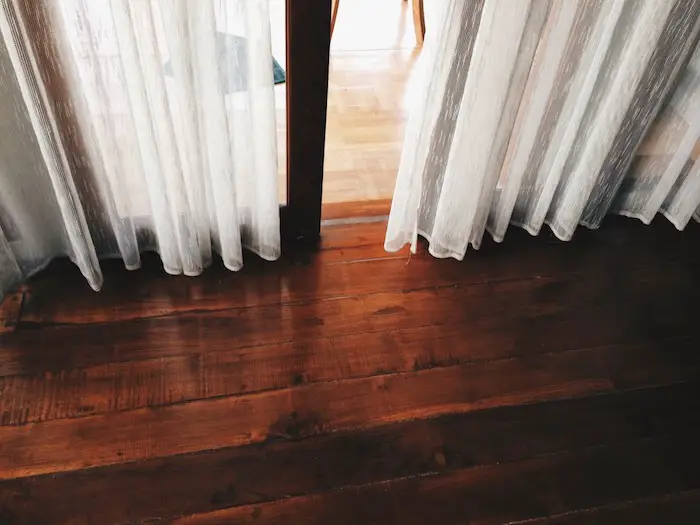
While we strongly recommend that you substitute carpets and rugs with hardwood flooring, this may not be a feasible option for all house owners. If you must use carpet on the floor, here are a few things you must consider to keep allergens at bay.
Fortunately, the fiber used in the mass-produced carpets like this and rugs is made of materials like nylon and polyester, the same materials used in making clothes and bags. These are synthetic blends made of lab-developed fibers that are capable of repelling allergens. Nylon is considered as one of anti-allergy- carpet fiber because molds have nothing to thrive on and pollens tend to dry out.
Fabric-like wool should be avoided because mold and allergens tend to thrive on it. No matter what materials you choose, make sure you avoid shag because if the strands are shorter, the pollens will have nowhere to go. For the same reason, you should also look for carpets that are tightly woven.
When buying carpets, bear in mind that they may be treated with chemicals to repel or neutralize the offending particles. Hence, always look for carpets that are labeled as low VOC or volatile organic compound. This restricts the use of chemicals like benzene and formaldehyde.
The low-quality carpet treatments often convert to gas after some time and impact the indoor air quality, triggering allergies. Hence, I would recommend that you ask carpet retailers about products that contain green substances (adhesive and padding).
Tips For Keeping Kid’s Bedroom Free Of Allergens
Kids are more vulnerable to dust allergies and they often suffer more than adults. Hence, you need to take special care to keep the kid’s bedroom and its belongings allergen-free. Here are a few tips to keep the irritants away from your baby’s environment.

- Buy wood or plastic chairs for the kid’s room because they will inevitably drop food and spill the liquid. Cozy cushions, fur, and soft materials may look cute but they can become the platform for bacteria, mold, and germs to thrive.
- Avoid feather bedding because allergens may hide in the gaps on the fabric. Always use a dust-proof casing on all types of beddings to prevent asthma and other respiratory problems.
- Never keep stuffed animals in the crib as allergens can get into baby’s bedding. Always keep stuffed toys in a cabinet and store them in a freezer bag when not in use.
- When it comes to gifts for children, request friends, and relatives to give books instead of stuffed animals. Keep the books inside an enclosed bookshelf.
- Animals fur can trigger allergies so keep clothes, bags, rugs or any other items made of animal fur away from baby’s room.
Natural Methods To Treat Allergens At Home
Besides the various prevention and cleaning, mold spores may still pop up in different areas of the house. If you are sensitive to chemicals, cleansing products may also trigger allergies. Here are some natural and effective ways to treat allergens.
Vinegar: This is a natural cleaning agent that works wonders at removing mold and mildew. You may dilute it with water or add a few drops of essential oil if the pungent scent bothers you. Spray vinegar on damp areas, leave for some time and then wipe off. You may mix vinegar with baking powder to create a more powerful natural cleaning paste.

Tea tree oil: This is a highly effective mold remover but it is slightly more expensive than other average solutions. Mix a few drops of tea tree oil in two cups of water and sprinkle this solution in areas covered with mold, mildew, and bacteria, leave for some time and then rinse.
Citrus seed extracts: This cleaning agent does not have any odor like vinegar or tea tree oil. Mix 20 drops of the extract in two cups of water and treat areas covered with mold spores to get a clean and healthy home.
Hydrogen Peroxide: If your bathroom and kitchen have become breeding grounds for mold, use a hydrogen peroxide solution to disinfect and clean. Spray the solution on the area to be treated, leave for a few minutes, scrub with a soft brush and then wipe with a damp cloth.
Baking soda: You may use baking soda (see different uses) as a standalone cleaning agent mixed with water or use it with vinegar or lemon to boost the effectiveness. This is a mild yet effective natural disinfectant that will kill mold spores and bacteria without leaving any odor.
Related Questions
How often should you vacuum if you have allergies?
If you have allergies, you must vacuum your house at least once every week. Wear a dust mask to stay safe while vacuuming or you may ask someone to help you with it.
Do cleaning products cause allergies?
Certain cleaning products contain harsh chemicals that can aggravate allergy or asthma symptoms. Such products release fumes that can irritate the respiratory tract and trigger allergies. To prevent this, look for products that come with a green seal as they are good for the environment too.
What can you do to get rid of allergies quickly?
Take preventive measures like wearing a dust mask, rubber gloves, and using natural cleaning products while cleaning to reduce allergies. If you still get them, remember to drink more water and eat healthy food to get rid of them fast.
Do allergies increase or decrease with age?
Kids with allergies may outgrow them completely when they grow up. If adults have allergies, the intensity may lighten as they age. This is because the immune system weakens and cannot show stronger reactions to allergens.
